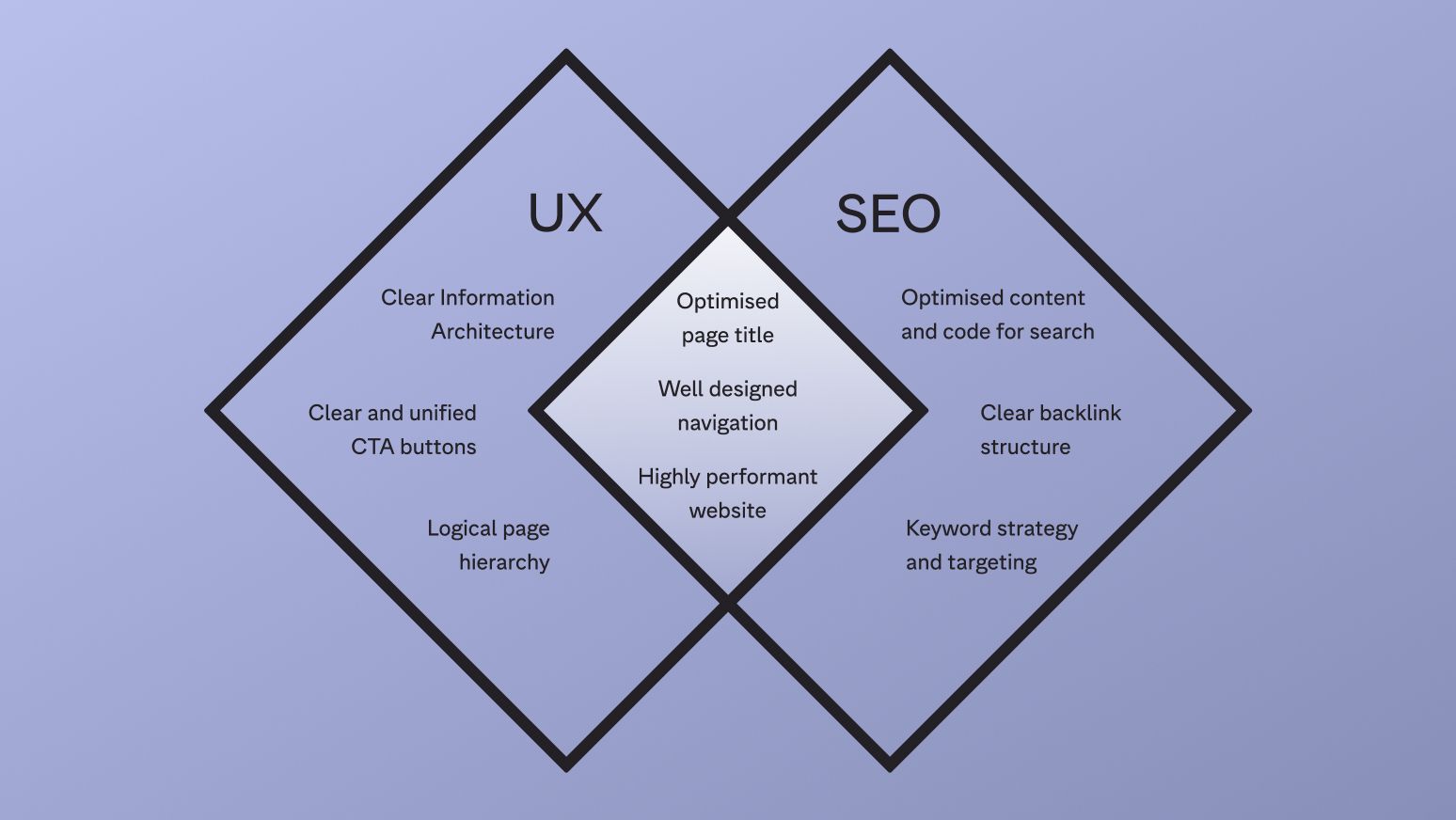
In today's digital world, building a strong online presence requires a comprehensive approach; especially when the end goal is to create a user-friendly digital product that ranks well in search engines.
Two of the main ingredients? User experience (UX) and search engine optimisation (SEO). And though these two disciplines are often seen as separate elements of a strategy, for us, they go hand in hand.
Why? Let us tell you…

- It all begins with the design strategy
Both UX and SEO should start with a design strategy to define the goals and objectives, as well as understand where the user needs meets the business needs. This should be a factor throughout any marketing activity, even if looking at SEO in silo. This is what sets the North Star, determining what you’re trying to achieve and for who, and the ‘how’, be it through UX, Design or SEO, becomes clear. - The information architecture of a site is becoming more complex
Understanding the information architecture (IA) is not the job of an SEO, but with the launch of the decoupled web, it’s becoming more apparent that this is something that needs to be addressed, be it through upskilling or a closer alignment to a UX expert. The decoupled web means that content can be seen in many different places and shared across many different websites, so while SEO still has a vital part to play in these more complex content models, there needs to be an understanding of how this works in practice. - You must align user intent with content
Successful UX focuses on meeting user needs and providing relevant content. SEO research helps identify the keywords and phrases that users search for, enabling UX designers to align the website's content with user intent. By integrating these targeted keywords naturally into the content, UX designers can create a user-centric experience that answers users' queries and helps them find the information they are looking for. Ultimately, Search Engines are becoming increasingly focused on user intent so ensuring this is addressed will be key. - You can enhance website structure and navigation
SEO and UX go hand in hand when it comes to optimising website structure and navigation. A well-structured website with clear hierarchies and intuitive navigation not only improves the user experience but also aids search engine crawlers in understanding the website's content. It’s vital to optimise site architecture, ensuring that it is both user-friendly and search engine-friendly, resulting in improved usability and better crawlability. - You can improve page load speed and mobile-friendliness
Page load speed and mobile-friendliness are critical factors in UX design. Slow-loading websites or those that are not optimised for mobile devices can frustrate users and lead to high bounce rates. From an SEO perspective, page load speed and mobile-friendliness are also important ranking factors. By optimising website performance and ensuring mobile responsiveness, UX designers can create a seamless and enjoyable user experience while also meeting the technical requirements of search engines. - You can enhance user engagement and retention
SEO and UX collaborate to enhance user engagement and increase user retention. When users have a positive experience on a website, they are more likely to engage with the content, explore other pages, and spend more time on the site. This increased engagement signals to search engines that the website is valuable and relevant, contributing to improved rankings. By creating intuitive interfaces, easy-to-use navigation, and relevant content, UX designers can boost user engagement, reduce bounce rates, and encourage users to return, leading to higher rankings and sustained organic traffic.
In the digital space, SEO and UX are inseparable partners for achieving online success. By integrating SEO principles into UX design, websites can rank higher in search engine results, drive organic traffic, and deliver exceptional user experiences. The collaboration between SEO and UX ensures that websites are optimised for both search engines and users, resulting in increased visibility, improved user engagement, and higher conversion rates. Embracing the importance of SEO in UX design is paramount to unlocking the full potential of a digital product’s success and creating a seamless, user-centric online experience.
